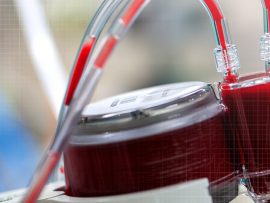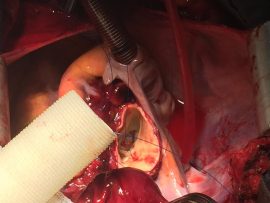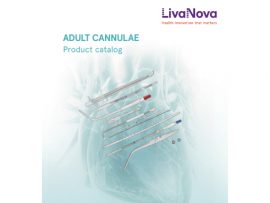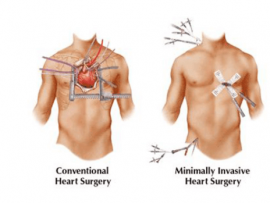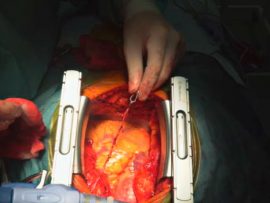Abstract The optimal arterial cannulation site in minimally invasive cardiac surgery (MICS) remains debated. While axillary, femoral, and central approaches each offer distinct advantages, no prior network meta-analysis has compared..
Read MoreAbstract This meta-analysis aimed to compare short-term outcomes in patients undergoing minimally invasive cardiac surgery (MICS) using endoaortic balloon (EAB) and transthoracic aortic clamp (TAC) techniques. A comprehensive search of..
Read MoreAbstract Background Recent studies demonstrated satisfactory results of del Nido cardioplegia in minimally invasive cardiac surgery (MICS). We aimed to evaluate the efficacy of our modified “bloodless” del Nido cardioplegia..
Read MoreThis video demonstrates the technique of open cut down femoral vessel cannulation for cardiopulmonary bypass during minimally invasive procedures using the semi-Seldinger technique. The information and views presented on..
Read MoreAbstract Introduction Sternotomy has been the most common approach for the correction of congenital cardiac defects, and questions arise surrounding the safety, feasibility, and cost-effectiveness of implementing minimally invasive techniques..
Read MoreAbstract Background Management of acute aortic dissection (AAD) caused by retrograde perfusion through the femoral artery during minimally invasive cardiac surgery (MICS) remains controversial. We present a case of AAD..
Read MoreAbstract OBJECTIVES Minimally invasive cardiac surgery (MICS) struggles with effective caval isolation and cannulation for cardiopulmonary bypass (CPB). We aimed to develop a novel MICS venous cannula, eliminating external manipulations...
Read MoreAbstract Background The adoption of minimally invasive cardiac surgery (MICS) has increased over the past 25 to 30 years, driven by advancements in technology and a growing understanding of its..
Read MoreAbstract Objectives: Sternotomy is rarely performed for veterinary therapeutic or recovery models in quadrupeds because of difficulties with breathing, ambulation, and pain control. Central cannulation for cardiopulmonary bypass (CPB) is infrequent..
Read MoreAbstract Background/Objectives: The optimal choice of cardioplegia solution in minimally invasive cardiac surgeries (MICS) remains debated, as prolonged myocardial protection is essential to avoid interruptions to the surgical flow, which..
Read MoreAbstract Objective To evaluate the outcomes of minimally invasive cardiac surgery (MICS) compared with the sternotomy approach for Jehovah's Witness (JW) patients who cannot receive blood transfusions Design This was..
Read MoreAbstract Objective: Venous drainage is often problematic in minimally invasive cardiac surgery (MICS). Here, we describe our experience with a self-expandable stent cannula designed to optimize venous drainage. Methods: The smart canula® was used..
Read MoreAbstract Cardioplegic solutions are used in cardiac surgery to achieve controlled cardiac arrest during operations, making surgery safer. Cardioplegia can either be blood or crystalloid based, with perceived pros and..
Read MoreMinimally invasive heart surgery (also called keyhole surgery) is when a conventional operation is performed on or inside the heart using small incisions. The surgeon also sometimes uses specialized instruments...
Read MoreAbstract Efforts to reduce the trauma and discomfort associated with thoracic and cardiac procedures in children have a long and complex history. While much of the early focus has been..
Read MoreLectures and panel discussion on Trans-Cranial Doppler, Novel approach for Minimally Invasive Mitral Valve Repair with Hypekalemia, and management of the ECMO patient.
Read MoreAbstract A best evidence topic in cardiac surgery was written according to a structured protocol. The question addressed was ‘In patients undergoing off-pump coronary artery bypass grafting, for single or..
Read More

